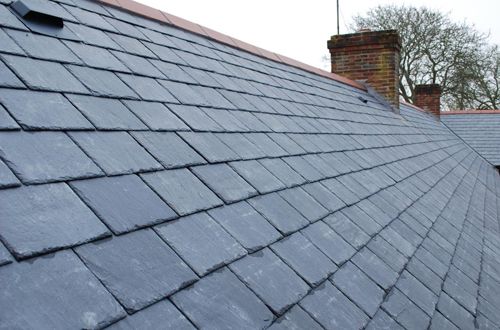 It may seem like ‘health and safety gone mad’ in the construction industry, with many different regulations being introduced that impact on us all, but whether you are an employee, a self-employed roofer, or even a small, medium or larger roofing contractor, these regulations are there for good reason.
It may seem like ‘health and safety gone mad’ in the construction industry, with many different regulations being introduced that impact on us all, but whether you are an employee, a self-employed roofer, or even a small, medium or larger roofing contractor, these regulations are there for good reason.
“Why?” I hear you ask. First and foremost, the regulations are in place to protect the safety of you, the business owner, all your hard-working staff, and also your customers. As you’ll know all too well, in the area in which you work, accidents can happen and mistakes can occur, which is an unfortunate reality in our industry. However, by following the relevant health and safety guidelines, if accidents do transpire, they will remain as ‘minor’ incidents that are easily rectified. Therefore the job can be continued with minimal interruption and, most importantly, everyone involved is fine and well.
The regulations – which are characterised below – differ depending on the size of your business. We are aware that with experience comes knowledge of the best way to do things, but are these ways always the safest ways? To remind yourself of the safety regulations, and to ensure that you and your employees are working safely and within the law, here is a recap of what you should be doing.
Self-employed roofers:
Did you know, taking care of our own health and safety and that of others, is a legal requirement? You should have the confidence and competence to undertake tasks and remove hazards, but never accept jobs that you are not qualified to do.
It’s important to always co-operate with your fellow workers and contractors to enable them to make and keep the workplace safe. Following site rules, reporting and discussing problems, and consulting with colleagues goes without saying. Look out for and report any problems and never interfere with or misuse anything provided for health and safety.
Small & medium sized contractors:
Did you know that most major injuries in construction occur on smaller building projects? Over 60% of those involve falls from ladders, scaffolds, working platforms, roof edges and falls through fragile roofs or rooflights.
Do you work on private domestic projects that involve extensions, repairs and refurbishment work on private homes? If so, you have the sole responsibility for site health and safety on these projects. Equally, you will have shared responsibilities if you work on smaller business projects that involve short duration repairs and refurbishment work for business clients (fewer than 30 days of construction work).
The latest Construction (Design and Management) Regulations (CDM) that were revised earlier this year will hopefully lead to reduced numbers of accidents on smaller projects. The revised CDM offers clearer guidelines about the level of competence and supervision that is now required on smaller jobs.
Close cooperation and coordination amongst everyone involved in a project can stop things going wrong – that means planning and monitoring construction work to ensure it is done safely. In addition to managing hazards and risk, the onus is on you to inform and train your workforce. Providing site inductions and outlines covering risks and precautions, plus site rules and emergency procedures, are all required.
Whilst the business client has legal duties and is obliged to co-operate with you and have arrangements for managing the work, it also makes sense to work closely with the building occupier to meet your responsibilities for site safety.
Larger contractors:
Did you know that if a roofing contractor is not insured and does not follow health and safety guidelines, then the client is liable if the unexpected occurs?
If you are a larger roofing contractor, you are required to plan, manage and monitor construction work so it is done safely and without risks to health. Larger projects lasting longer than 500 person days or 30 working days, with more than 20 people working on them at the same time, must be notified to the Health & Safety Executive (HSE), and more detailed construction phase plans may be required.
There is also a legal obligation to provide information and training to your workforce, as well as co-operating with the principal contractor to implement the construction phase plan and manage project risks. Wherever possible, the onus is on you to take action to ensure health and safety where it is not possible to comply with the plan.
Taking into account the above regulations and guidelines, regardless of the size of your business, health and safety is good common sense and it looks good for your business too! If you follow the guidelines to the letter, everyone wins, and that includes your customers. Best roofing practice equals safe roofing practice, and success will always follow safety.



